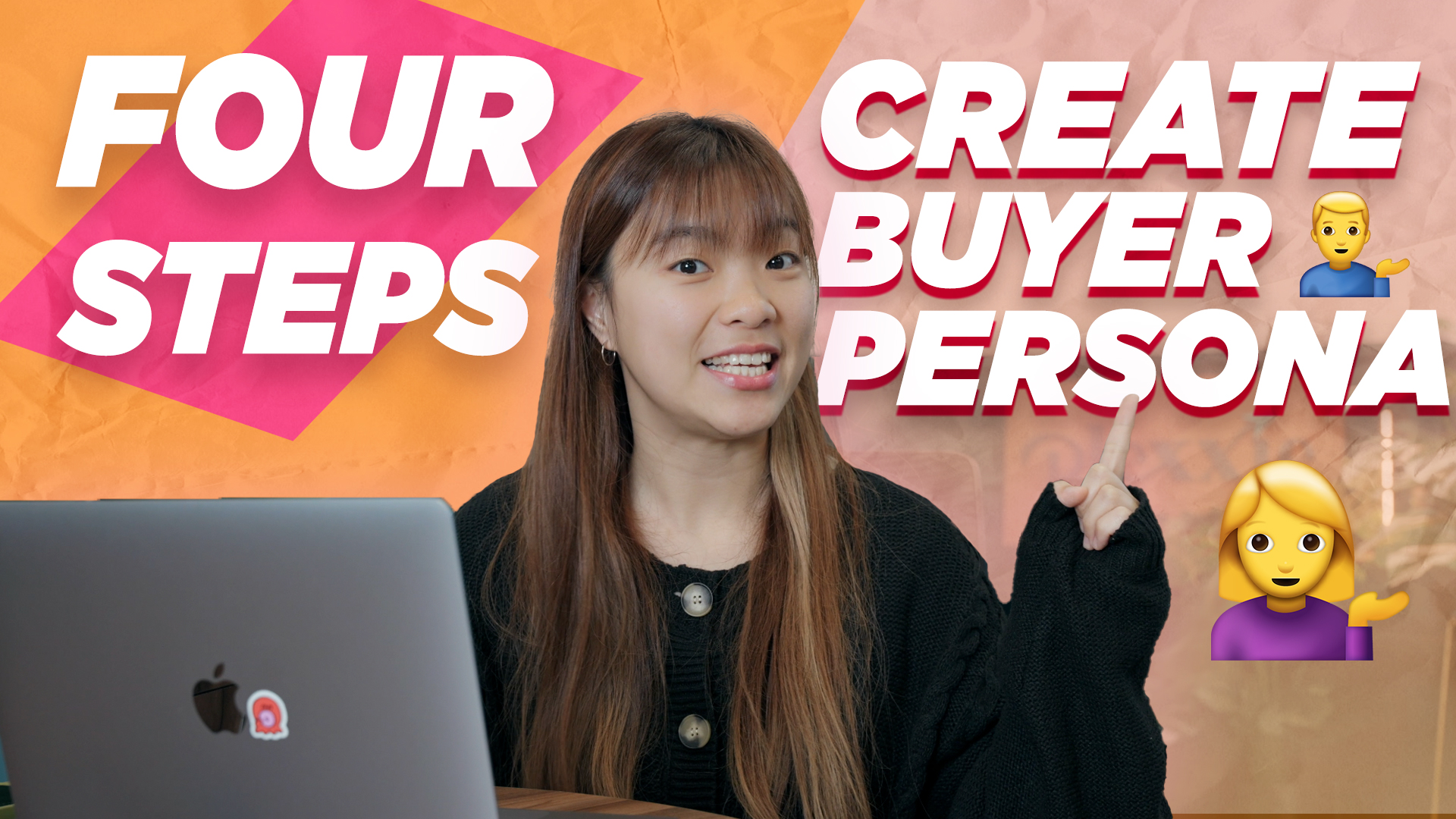Having great organizational skills is one of the most underrated practices in life, don’t you think?
Being organized helps us to set our thoughts and plans straight, which makes it easier for execution. It helps us in our daily life, at work, and in our processes of thoughts – which is exactly what I’m applying now as I’m writing this article!
With it being a daily need, I don’t see why there should be an exception when it comes to planning for your brand’s Social Media Calendar. All the more!
Creating a Social Media Calendar allows you to follow through on pushing out content at a given deadline in an organized manner.
It also allows you to ensure that your branding stays constant in visuals and voice across your social media channels.
With that said, allow me to bring you through the 7 steps of creating a Social Media Calendar for your brand.
Create A Social Media Calendar In 7 Steps
Step 1: List target audiences and 3 audience personas
Step 2: List types of content topics
Step 3: Prepare your calendar
Step 4: Sectioning out the content topics & best days/time to post
Step 5: Plan out the details of each post
Step 6: Differentiate the content types
Step 7: Finalise!
Note: If you already have a list of target audiences and audience personas, skip to Step 3!
Step 1: List target audiences and 3 audience personas
Before starting on planning for your content calendar, it is essential to drill down on the types of audiences you are speaking to. This will help you to better understand factors such as their interests, day and time that they will usually be on social media, spending power, and more.
Grab your digital notepad or a paper and pen (if you prefer it conventional!), and start listing down the types of target audiences for your brand.
Questions to ask yourself:
- Who will most likely be interested in my product/service?
- Gender – Female, Male
- Age – Kids, Young Adults, Middle-Aged Adults, Elderly (be very specific with the age range!)
- Location – Local, International, Specific region
- Income level – Low spending power, Average spending power, High spending power
- Other traits – Ethnicity, Status, Education level, etc.
- Who are the types of customers who are currently buying from my brand?
- Who are the types of customers who will find my product/service a necessity to have
Find out more on how to define your target market.
Once you’ve noted down the different target audience types, proceed on to creating 3 different audience personas.
Think of their characteristics and be even more detailed with who they are as a person – Give the personas a name, think of their personalities, where they come from, what they enjoy doing, where they like to go, if they enjoy socializing, etc.
These factors will allow you to have a better reference on planning for the next step.
Step 2: List types of content topics
Well done on having your all personas figured out! It’s time to list down the types of content topics that they will like to see from your brand.
In this step, there will be several lists that you will have to come up with. Start by listing down the types of content that are relevant for your brand to push out.
Some examples are:
- Background & History
- About the Brand (meaning behind the name!)
- Unique Selling Point (USP)
- Benefits of products/services
- Mission and Purpose
- Fun Facts and Tips
- Trivia
- User Generated Contents
- and more
Have fun and create a list as long as you’d like. In this case, the more the merrier!
Once you’re done with the list of contents, you may move on to checking off the things that each of your personas would be interested to see.
The easiest method will be to put yourself in their shoes.
For example – What would persona A, a 23-year-old sports enthusiast who loves food, will like to see from your brand (assuming that you own an F&B branch)? Seeing that he’s a sports enthusiast, one possibility could be that he enjoys healthier options.
Once you’re done with all 3 lists of your different personas, look out for the common content types and combine them into your finalized list.
Be as realistic as possible in this step, and do your research on the marketing trends before finalizing the content list.
Not too sure what to look out for? You may read our article to learn more about the Social Media Marketing Trends in 2021.
Step 3: Prepare your calendar
It’s as simple as the title states!
Have a digital or printed content calendar for the month ready, and start by indicating the days that you will be pushing out a special promotion or campaign (if applicable).
Step 4: Sectioning out the content topics & best days/time to post
This is where the most important stage takes place – Sectioning out the content topics for each post and scheduling them according to the best days and times that your audiences are most engaged on the platform.
There are two methods to do this:
You can either choose to highlight the content topics to be posted for the month, before listing the posts onto the days you feel are most suitable according to the topic.
Or you could map out the posting dates, before diving deeper into choosing the content topics that you will like to highlight for the month.
For our client’s content at Plexxie, we usually go with the latter as it will help us to better outline the different days that we can experiment with the engagement and activity rate before drilling down on the chosen content topics.
The key factor of planning the content topic for each post is to make sure that it makes sense to the lifestyle of your audiences according to the chosen day. For example, posting about Happy Hour promotions might work more effectively on Fridays compared to Mondays.
However, don’t be subjected to sticking to certain days of the week just because it worked for a month. Be keen on exploring different days to test the engagement and activity rate of your audiences. Do also take note of the timings to post on each scheduled day and you’re all set to go!
Step 5: Plan out the details of each post
This next step will be to drill into the details of each post topic once you’ve sectioned them out in the calendar.
Dig deeper into the information that should be mentioned in the caption, which should be in line with the chosen content material.
How would you like to visually convey your message to your audiences, and what information would you like them to find out while reading through your caption?
Here are some factors to consider:
- Sales Method: Hard or soft selling
- Content Direction: Informative or Emotional
- Brand Voice: Professional or Casual
- Social Goal: Awareness, Engagement, or Conversion
Step 6: Differentiate the content types
With all the information and details you have planned, use them to list out the content types of each post – photograph, video, or design?
The platform that you will be marketing on plays a big part in deciding the types of content to use, and it is also important to plan in-line with the content details.
For example, long-form contents work better on Facebook compared to Instagram. However, if your post detail has minimal information to be shared, it would make more sense to post an image or design instead of a video.
Find out more on the breakdown of the types of content that works best for each platform.
Step 7: Finalise!
Congratulations on reaching the last step!
Albeit being the simplest step, it is important to take your time in finalizing before pushing the contents out for execution. Make your last changes and judge it based on your opinion – Would you be interested to follow and find out more?
Yes? Then consider it a job well done.
No? Return to any of the steps you find that you need improvements and start brainstorming again.
The steps listed are just guidelines and you can work interchangeably according to the flow that works best for you!
CONCLUSION
The secret to planning a great Social Media Calendar is to put yourself in your audience’s shoes, think like them as a consumer of your brand, and have fun in coming up with the whackiest content ideas!
Social Media is a new form of expression, and what better way to do it than with your brand?
However, if you’re still unsure of how to go about taking the first step, I’ll be happy to guide you! Feel free to reach out to us at hello@plexxie.com.
Never be too afraid to experiment and fail until you get it right. The worse that could happen to an idea is that nobody will care about it as much as you think they would. Even so, use that as a solution to try and try again!

















